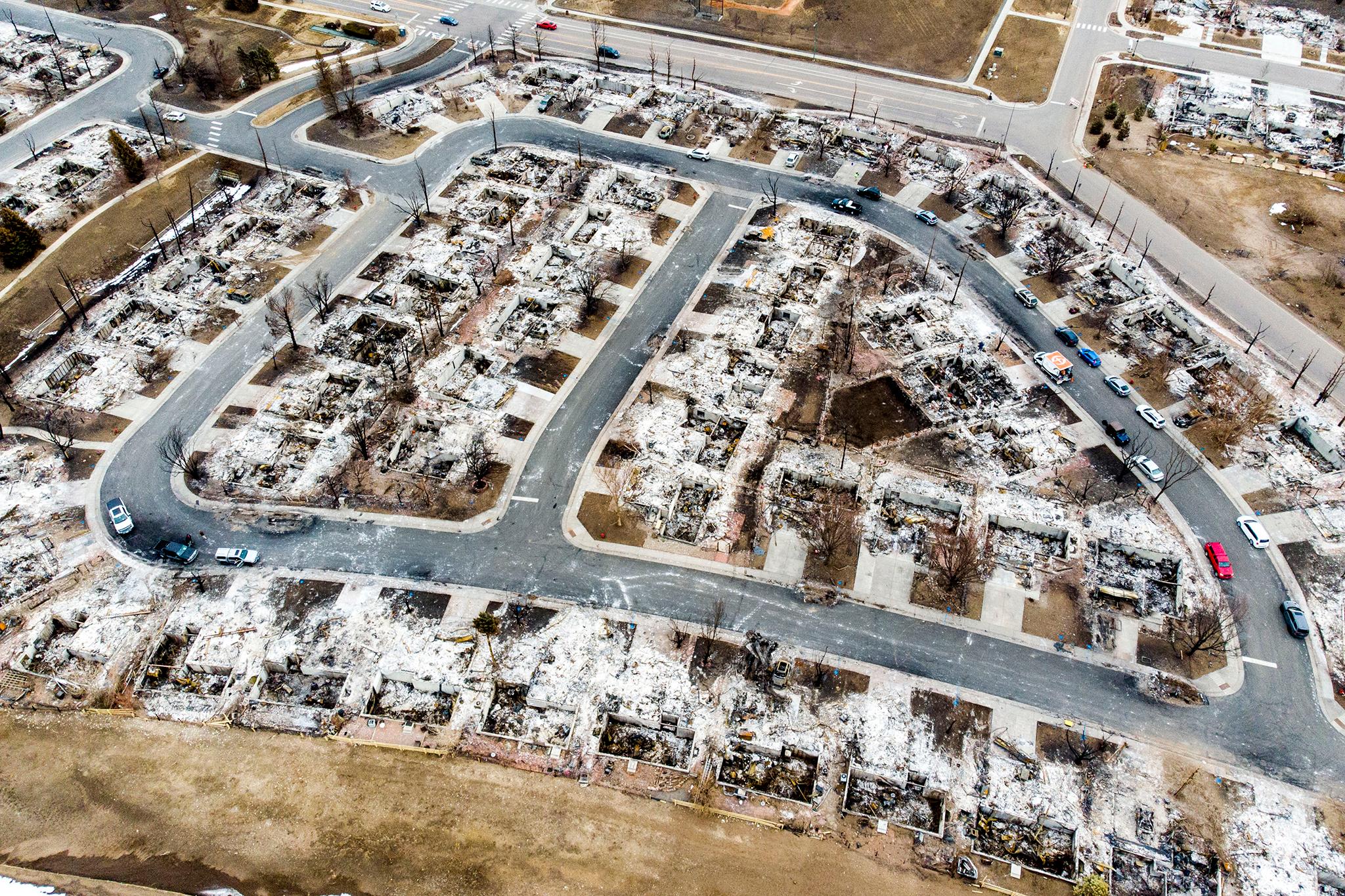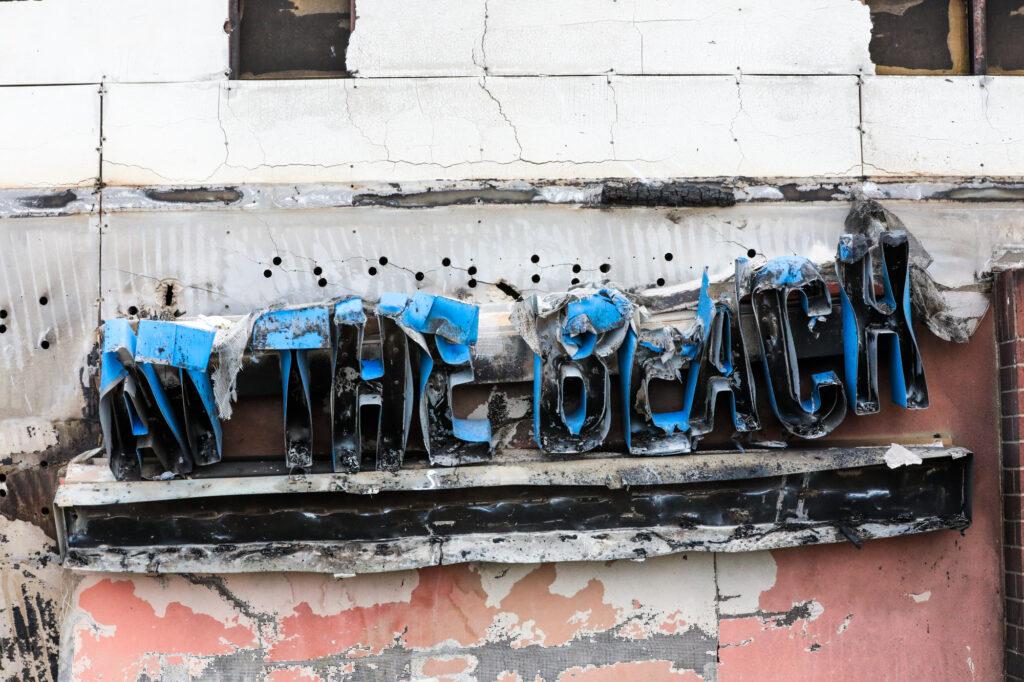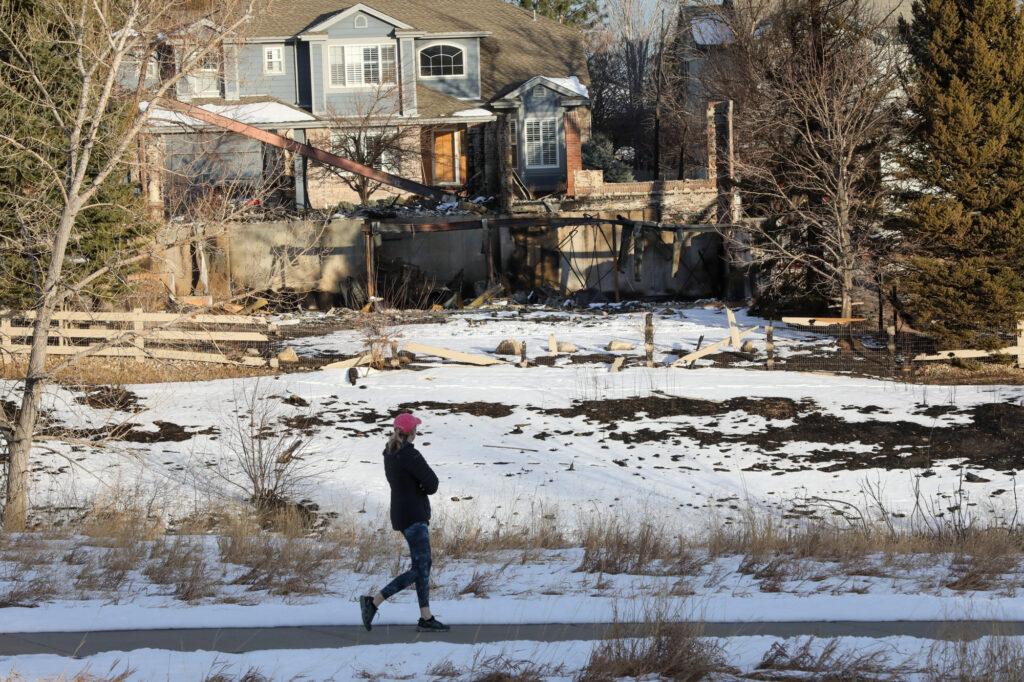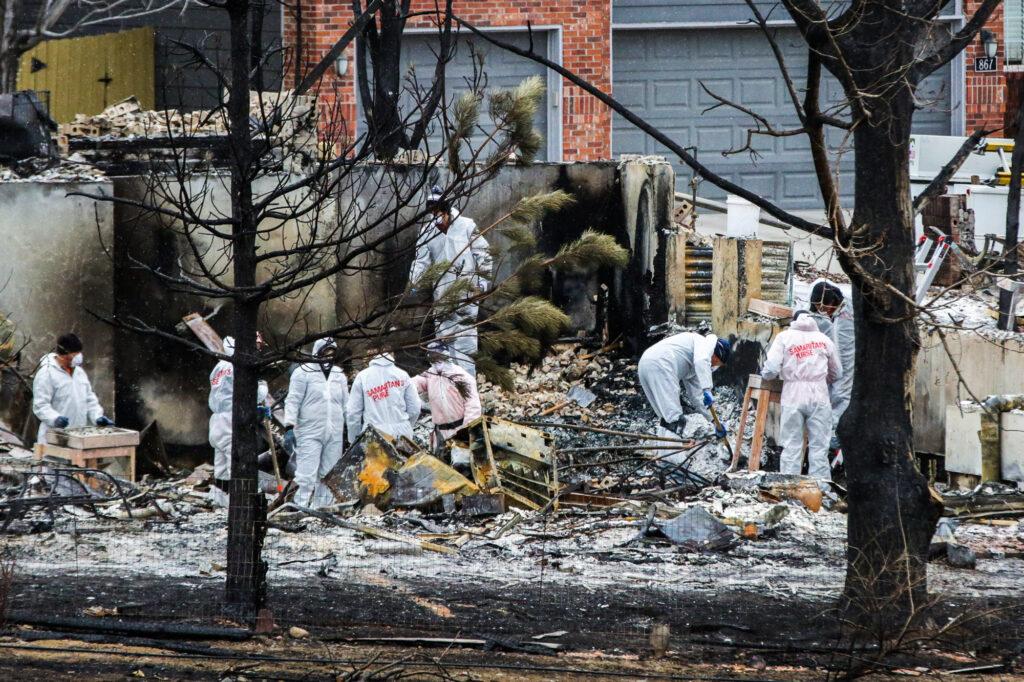
Nearly a month after a wind-whipped grass fire engulfed Boulder County neighborhoods, destroying more than a thousand homes and forcing the evacuation of tens of thousands of suburban residents, investigators say they’re still probing multiple potential causes.
Few details about the investigation have been made public. The Boulder County Sheriff’s Office says it’s casting a wide net and considering all possibilities. However, a spokesperson confirmed that investigators are actively focused on three explanations: downed power lines, human activity, and underground coal fires.
“We know our community members want to know what happened and we are doing everything we can to make that happen,” said Carrie Haverfield, public information officer for the Boulder County Sheriff’s Office.
At stake are potential criminal charges, and hundreds of millions in liability claims for lost homes, businesses, infrastructure and open space in Boulder County.
The Marshall fire ignited on Dec. 30 and spread ravenously to neighborhoods in Superior and Louisville, feeding on drought-cured grass and stoked by winds that gusted more than 100 mph from west to east.
In the fire’s immediate aftermath, Boulder County Sheriff Joe Pelle suggested downed power lines were the likely cause. He quickly became less certain as multiple possibilities emerged.

Initial reports blamed downed power lines
The first caller to report the fire and the first firefighter to arrive at the scene told dispatchers that a power line was hanging low across the road, but the firefighter did not initially spot flames. He asked for Xcel Energy to be dispatched to repair the line while he continued to search. Pelle later said Xcel cooperated with the investigation, checked the area, found no downed lines, and he walked back the theory that power lines had sparked the fire.
Adding to the uncertainty, the area's two largest telecommunications providers, Comcast and Lumen (formerly CenturyLink), also told CPR News that they had no wires down in the immediate area when the fire started. It remains unknown what kind of line the firefighter saw hanging low across the road — or who owns it.
Power lines and electrical equipment have started destructive wildfires across the West, including California’s massive Dixie fire in 2021. In December, Pacific Gas & Electric agreed to pay $125 million in fines under a settlement agreement after investigators determined a faulty transmission line ignited the 2019 Kincade fire.
Shortly after the Marshall fire was contained, the Federal Bureau of Investigation and the Bureau of Alcohol, Tobacco, Firearms and Explosives joined the investigation. Attention soon turned to property owned by Twelve Tribes, a fringe Christian sect founded in the 1970s, as a possible ignition source.

A search for clues
Authorities seized control of the Twelve Tribes property and executed a search warrant. It’s unknown what evidence they found — if any. Officials have declined to give any additional information, citing the ongoing investigation, but the property appears to have been released back to the group.
Two separate motorists spotted fires at or near the Twelve Tribes property days before and then possibly around the time the blaze is thought to have ignited.
One passer-by called police to report open burning on the property on Dec. 24. Crews with Mountain View Fire and Rescue responded and spoke to a man who was burning railroad ties in a dirt field, according to a summary report provided by the department. Fire crews reported the man had a front-end loader and a water source to control the fire, and the firefighters left the location 10 minutes after arriving.
On the morning of the Marshall fire, a Twitter user posted a now-viral video of wood, possibly a structure, burning behind the buildings on the Twelve Tribes property in an area where construction equipment is parked. The video is not timestamped, but the user said it was filmed at 11:30 am, which would be 24 minutes after the initial report, and nine minutes after firefighters started battling the blaze well east of where the Twitter user said they saw the fire burning. Investigators have not said whether they have authenticated the video.
Twelve Tribes did not return a call from CPR News requesting comment, but an anonymous member of the community told The Denver Post the group is cooperating with investigators.
Investigators are also examining whether an underground fire in an abandoned coal mine could have sparked the Marshall fire.
State regulators actively monitor 38 ongoing coal fires across the state, a toxic and dangerous legacy of a once-crucial industry. The fires can erupt spontaneously and burn for a century in underground coal seams that are exposed to oxygen. Underground coal fires have occasionally triggered above-ground wildfires, including the 2002 Coal Seam fire that torched 29 homes near Glenwood Springs.
Two of the coal fires monitored by the state are located near areas engulfed in the Marshall fire. A 2018 report from the Colorado Department of Natural Resources Division of Mining Reclamation Safety classified the fires as having low activity and posing a “very low” and “low” safety risk, respectively. The coal fires’ proximity to the Marshall Fire was first reported by 9News.
Jeff Graves, director of the state’s Inactive Mine Reclamation Program, said his office didn’t have any additional information about the investigation or any potential connection to coal fires.

Causes often remain a mystery
Two people likely died in the Marshall fire, which is now considered the most destructive ever recorded in Colorado. The fire was fueled by dry conditions and months of unseasonably warm temperatures, factors scientists say are intensified by climate change.
Experts at the Colorado Division of Fire Prevention and Control, which provided additional investigators during the first days of the Marshall fire probe but is no longer involved, said there is no standard timeline for a fire investigation.
"Each fire is unique," said Christopher Brunette, the section chief for Fire and Life Safety. "It's kind of like a fingerprint."
To understand how a fire started and spread, investigators examine burned materials, looking at which side of an object burned and for patterns that show how the fire moved. Dawn Tollis, the lead fire investigator for the division's investigations unit, said large fires often take longer to solve because they require more resources, including more investigators on the ground and more equipment to move debris.
Investigators assigned to California’s Dixie Fire, which destroyed more than 1,200 buildings last summer, took nearly six months to determine that a tree fell on a PG&E power line, sparking the blaze. The 2012 Waldo Canyon fire in Colorado Springs burned more than 300 homes and remains unsolved. The two largest fires in Colorado, 2020’s East Troublesome and Cameron Peak, remain unsolved more than a year later, though both are believed to have been caused by humans.
Investigators have failed to determine what or who created the initial spark in more than half of the largest human-caused fires in Colorado between 2000 and 2018.
Fire division officials said that the high winds fueled the Marshall fire have complicated investigators’ understanding of how the flames behaved. Broadening the investigation to include coal fires and any other possibilities is not unusual because eliminating everything that did not cause the fire is just as important as finding the ignition source.
"Historically, there have been fires there," Tollis said. "To do our due diligence, we have to make sure that that is either eliminated or included as a possible cause."
The most recent assessment by a Boulder County task force estimates the fire caused more than $513 million in residential damage alone, making it the costliest fire in the state’s history.
Brunette said he knows it's important for people to know how the Marshall fire started as part of the healing process.
"We know they're hurting. We know it might be a while before there's answers," he said. "We're trying so hard to not miss something."
More coverage of the Marshall fire:
- After the Marshall fire, regulators want to know how climate change and extreme weather will affect the energy grid
- The Marshall fire burned whole subdivisions and shopping centers. Are the ashes an air quality threat?
- Boulder County has rules on how to better build homes to survive wildfires. None of them applied where 1,000+ homes burned in Marshall fire
- For people who lost homes in the Marshall Fire, insurance might not cover everything.
- How to make an evacuation plan for fires, floods and other Colorado disasters








